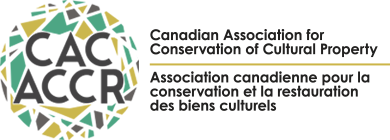J.CAC VOLUME 44 (2019)
A Comparison of Birch Bark Colour Change Due to Methanol or Ethanol Vapour Exposures
This research assesses whether exposing birch bark to methanol or ethanol vapours as used in treatments to reshape distortions in bark artifacts causes colour changes. Analysis of water, methanol and ethanol extracts of bark by pyrolysis-gas chromatography-mass spectrometry (Py-GC-MS) confirmed that methanol and ethanol solvents extract similar compounds in similar relative abundances from birch bark, while water presents a different extraction profile. Three barks of different colours on their cambium sides were exposed to methanol or ethanol vapours for two different exposure periods, and were monitored visually as well as through colour measurements and weight gain for up to 35 weeks after treatment. The short (2.3-day) methanol vapour exposure gave the best results: low colour change combined with fast absorption rate and sufficient peak weight gain to improve bark flexibility. Analysis was carried out on samples of a white crystalline deposit that occurred on one of the barks exposed to ethanol vapour: it was identified as betulin and lupeol in approximately a 2:1 ratio. Cleaning the vapour-exposed barks with swabs moistened with water was successful in removing the white residue and did not in itself cause colour change.
Download: JCAC44 Dignard et al.